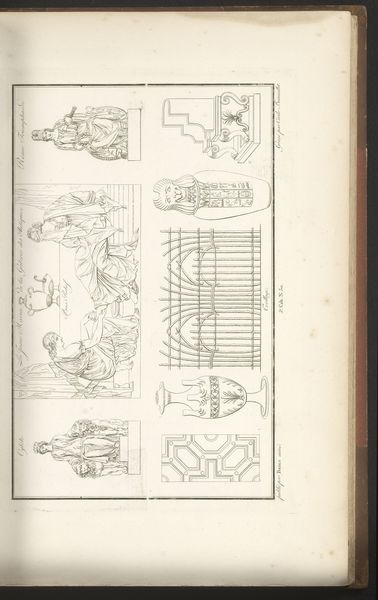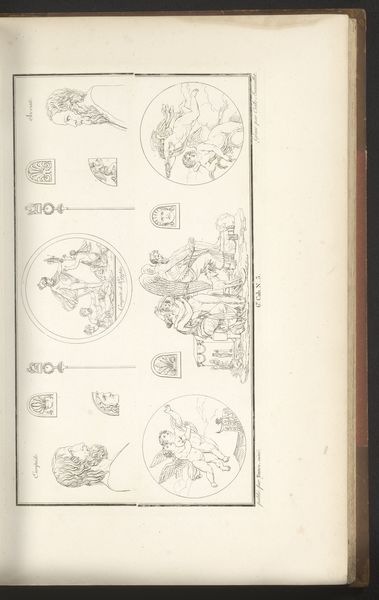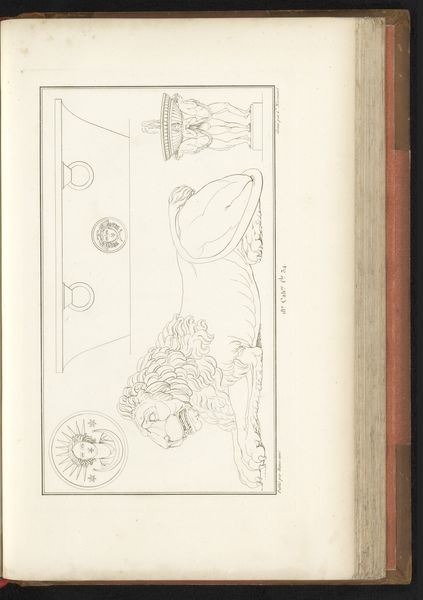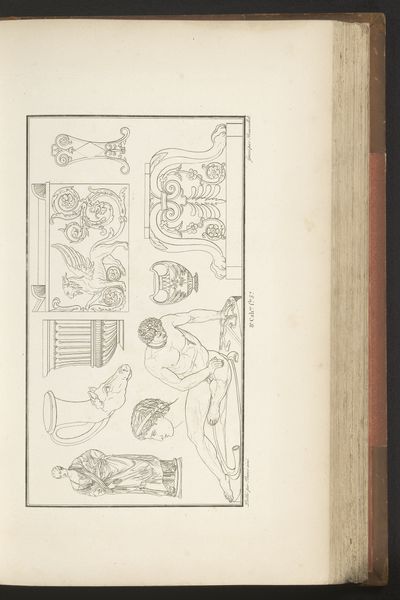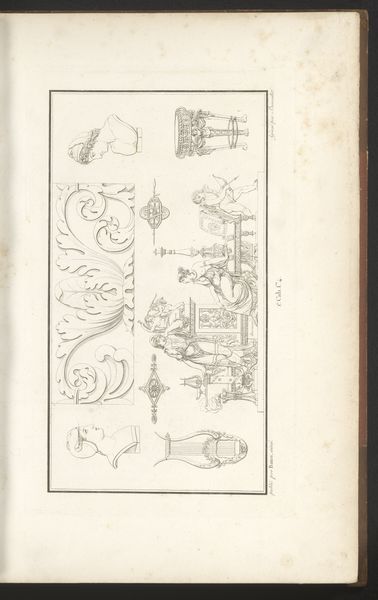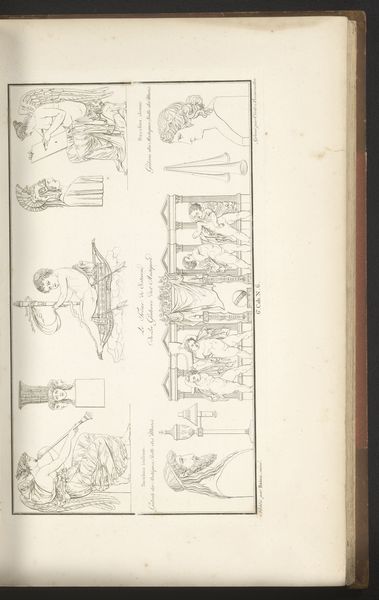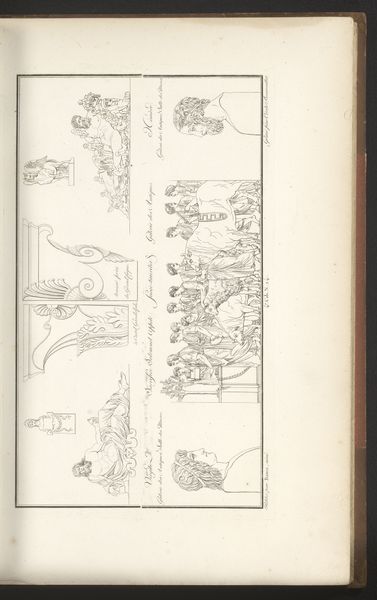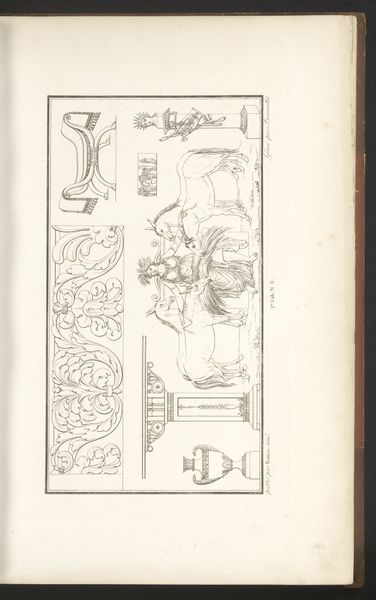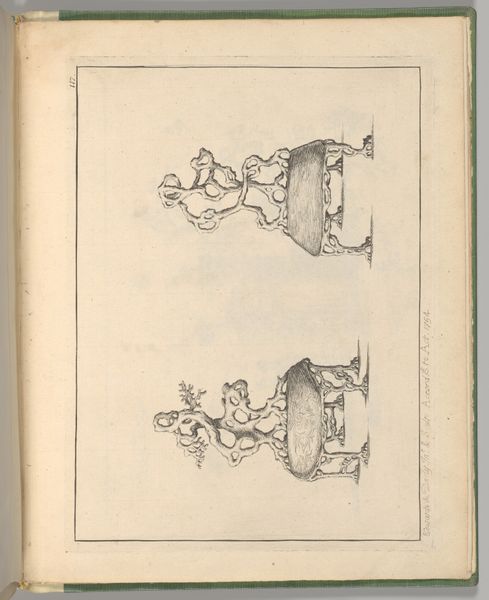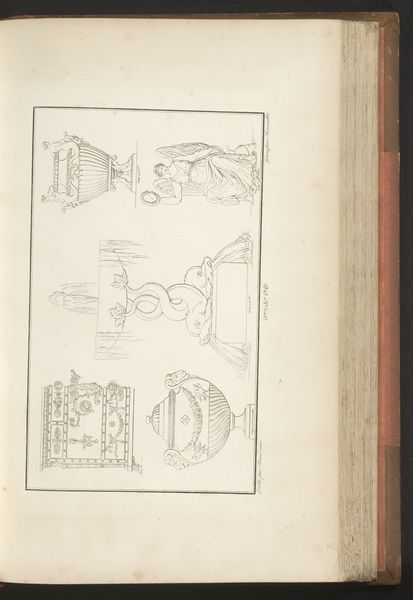
drawing, paper, ink
#
portrait
#
drawing
#
greek-and-roman-art
#
figuration
#
paper
#
ink
#
ancient-mediterranean
#
line
Dimensions: height mm, width mm
Copyright: Rijks Museum: Open Domain
Editor: Here we have Pierre-Nicolas Beauvallet’s “Two compositions with multiple figures” created around 1820, using ink on paper. The compositions are quite minimal. I am struck by how the artist creates depth using line alone. What stands out to you about this piece? Curator: The initial impact of the drawing stems from its medium. Line is its most crucial element. Notice how the compositions employ a relatively uniform lineweight that allows the forms to advance and recede in equal measure across the composition’s surface. Observe the structure of each representational element in its composition, as each relies on subtle variations in line. How would you define its form? Editor: I see what you mean. It’s representational in that the drawing portrays figures and architectural elements. But I notice that the lines don’t indicate specific light or shadows that create the shapes, the details exist without a clear source of light to give volume. Curator: Precisely. Rather than imitating direct observation from nature, this linear structure adheres to intellectual rigor, perhaps referencing the ancient subjects or the engravings on which these sketches may be based. How do you respond to its formal geometry? Editor: I agree. There are a number of architectural cues with very precise, square forms in contrast to the rounded lines of the human forms, which strikes a strong and purposeful balance between the two opposing types of figures and line forms. Thanks. It’s like the figures are specimens for comparison and contrast between art historical eras and representational techniques. Curator: Indeed, understanding the artist’s arrangement of space helps us see the formal relationship between the line weight and implied subject. Looking at the internal structure makes for close reading.
Comments
No comments
Be the first to comment and join the conversation on the ultimate creative platform.


